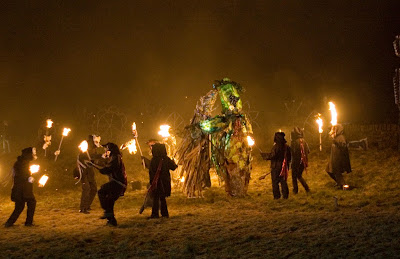A Hidden Treasure in Barcelona - Basilica of Saints Justus & Pasto
Written by MikeH
In the heart of Barcelona lies the basilica of Saints Justus and Pastor. This fascinating church has a long history related to legends, martyrdom, funerary rites and the supernatural world. Tradition says that this is Barcelona's oldest Christian sanctuary in the city. Whether this is true or not, it is clear that this magnificent building stands in one of the Gothic Quarter's most charming and least explored spots. The temple is also unique because its preservation is exceptional; it has survived wars, looting and religious persecution.
 |
| Basilica of Saints Justus and Pastor |
The church has also been the centre of multiple conspiracy theories; its interior holds a tombstone attributed to the last Visigoth king, a lateral chapel features a pregnant virgin, Free-mason symbols can also be found all over its structure. It is also believed that the Virgin of Montserrat, protector of Catalonia, was saved here after it was discovered in the 9th century. This could be the reason why the architect Antoní Gaudi went there every day to pray.
Describing in one post the magnificence or the history around this temple would not do it justice. There are many more elements to be seen and discovered, though for now I will focus mainly on the origins of the church, with an emphasis on the possible pagan roots and the enigmatic tombstone discovered in the 18th century.
 |
| Interior |
About the church
This Gothic style church is dedicated to the Saints Justus and Pastor, two Christian martyrs who lived in the times of the emperor Diocletian. The church was constructed between 1342 and 1363, on the foundations of the Romanesque church that once stood on the site. Its structure is typical of the Catalan Gothic style, featuring a single nave with chapels between buttresses. Outstanding features include the keystone arches displaying scenes from the life of Christ and the Virgin Mary. Also of major interest is the altarpiece of Saint Felix, the altar of the Souls in the Purgatory, the baptismal fonts made from Byzantine capitals and its magnificent stained glasses.
When the Germanic invaders, the Goths, conquered Spain, Barcelona became the court of the King Ataulf and the first version of this church was built. Since then, the temple enjoyed royal protection, only interrupted by the Muslim invasion, when it is said that the church was used as a mosque. Louis the Pious, son of Charlemagne, retook the city in the year 801 and conferred three special privileges on the church. One privilege was somehow unusual; the sacramental testament. In the chapel of Saint Felix it was possible to declare and confirm one’s last will before dying, a tradition absolutely legal until 1991 when it was abolished!
 |
| The Pregnant Virgin |
A temple to Castor and Pollux or Saints Justus and Pastor?
The pagan roots of this church have been a large source of debate. The fact that the current building stands very close to the amphitheatre, where Christians were martyred, and the very recent archaeological evidences which have brought to light Roman remains dating from the 1st century may support these theories.
According to popular beliefs, this might have been the place where the temple of Castor and Pollux, two Greco-Roman divinized heroes, once stood. Their names were Christianized and changed, and they became the saints Justus and Pastor! The first Christians from Barcino also suffered these persecutions in the beginning of the 4th century. The most famous victim was Eulalia, who has become the patron saint of the Barcelona. The surroundings of the church were used as a cemetery for these martyrs, whose relics were greatly appreciated. This fact consecrated the place as one of the holiest in the city.
The Wittiza Enygma
A tombstone, presumably Visigoth, dating from the year 899 was found in the 18th century during the excavations of the church’s pavement. The original one was deposited at the Museum of History in the City, a replica is nowadays available within the basilica, next to the left wall of the main entrance. The translation of the Latin inscription reads as follows:
“Here lies Wittiza, son of Teodoredi. God forgives him, amen. In the era 938 of the Incarnation of God, in the year 890 during the second reign of Carlos King, the day 13 he died”
This reinforces the theories about the temple’s antiquity as the Visigoths seemingly utilized it for their burials. And here is where the mystery starts. Official history refers to one character by the name of Wittiza; the Visigoth King of Hispania, who died in the 8th century and was buried in Toledo! Who is in reality the person that is buried here?
 |
| Inscription |
Definitively, the basilica of Saints Justus and Pastor is a hidden treasure in the heart of our city. It is perhaps the most magnificent temple after the Cathedral. As mentioned previously, other architectural and archaeological elements are worth being analyzed: the Chapel of Saint Felix, its outstanding bell tower with an incredible view of the city or even the recently discovered Roman gravestones dating from the 1st century. The conspiracy lovers would be fascinated to get more details about the theory claiming not only that that the real Virgin of Montserrat is standing in altar, but that it would be a representation of Isis, the Egyptian goddess. All these can be topics for a new and interesting post. In the meantime, I strongly recommend you to get lost in the gothic quarter and explore this magnificent sanctuary for yourselves.
And of course, I will leave up to you to draw your own conclusions of all the mysteries surrounding Saint Justus and Pastor.
 |
| Bell Tower |
Images: Supplied by Author.


Comments
Post a Comment